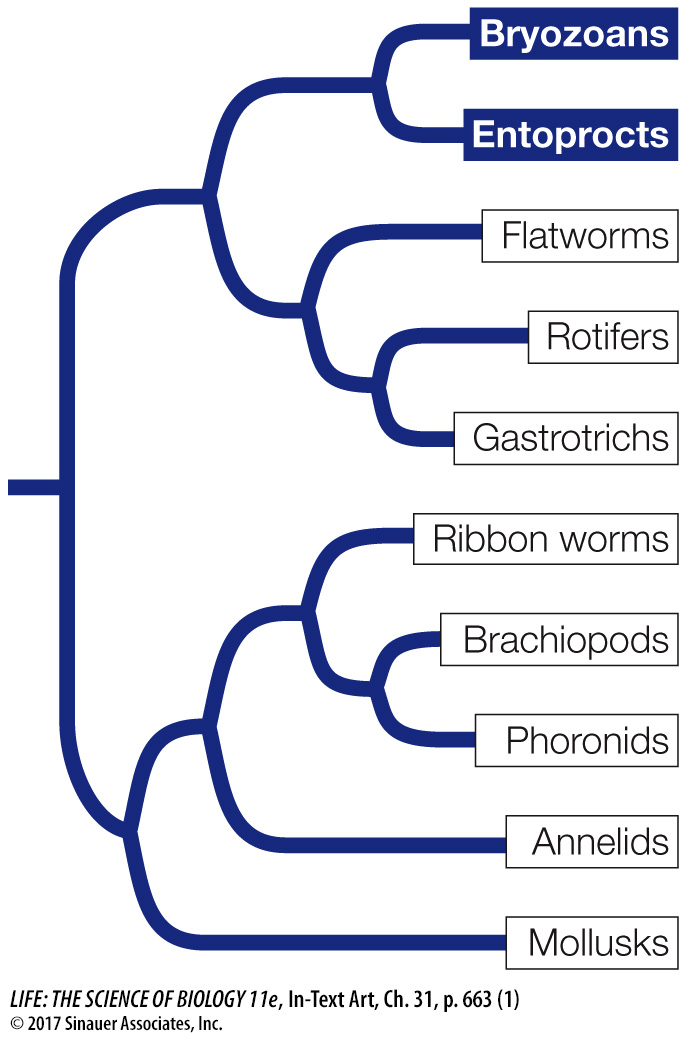Most bryozoans and entoprocts live in colonies

Most of the 5,500 known species of bryozoans (“moss animals”) and 170 known species of entoprocts (meaning “anus inside”) are colonial animals that live in a “house” made of material secreted by the external body wall. The colonial species are sessile, but the few solitary species can slowly move around in their environment. Almost all bryozoans and entoprocts are marine, although a few species occur in fresh or brackish water.
A bryozoan colony consists of many small (1–
Bryozoans can reproduce sexually by releasing sperm into the water, which carries the sperm to other individuals. Eggs are fertilized internally; developing embryos are brooded before they exit as larvae to seek suitable sites for attachment to the substrate. Entoprocts can also reproduce asexually. Some species of entoprocts release unfertilized eggs into the water for fertilization, whereas other species brood their developing young as bryozoans do.
Bryozoans and entoprocts differ in the placement of the anus. In bryozoans, the anus is located outside the ring of tentacles that make up the lophophore, whereas the anus of entoprocts is located in the center of this ring. The lophophores of the two groups also function differently: food particles are carried from the tips to the bases of the tentacles in bryozoans, but from the bases to the tips of the tentacles in entoprocts. Entoprocts lack a coelom, whereas bryozoans have a three-